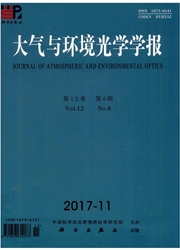

 中文摘要:
中文摘要:
利用固相微萃取-气相色谱三重四极杆质谱技术(SPME-GC-TQMS)对合肥市科学岛不同区域自来水进行了检测,研究了该地区自来水中部分消毒副产物(DBPs)的存在情况,以及DBPs含量与自来水封存时间的关系,并利用SPME-GC-TQMS对煮沸的自来水进行检测,考察煮沸方式去除卤代烃类消毒副产物的有效性。结果表明:科学岛自来水中存在三氯甲烷、一溴二氯甲烷和二溴一氯甲烷等多种卤代烃类DBPs,且来源于不同建筑物的自来水中DBPs含量差异高达3倍;自来水在水管内存储时间越长,卤代烃类DBPs浓度越低;自来水经过煮沸处理后,大多数卤代烃DBPs可有效去除,但三氯甲烷仅降为原自来水中含量的30.2%,仍大量存在于凉开水中。
 英文摘要:
英文摘要:
Solid phase microextraction gas chromatography triple quadrupole mass spectrometry (SPME-GC- TQMS) was used to detect the tap water from different areas in Hefei Science Island. It was used to study the existence of partial disinfection by-products (DBPs) in tap water and the relation between DBPs concentration and storage time of tap water in tube. SPME-GC-TQMS was also used to investigate the effectiveness of boiling method for the removal of halogen hydrocarbon disinfection byproduct. The results indicated that tap water in the Science Island contained chloroform, bromodichloromethane, dibromochloromethane and other halogenated hydrocarbon DBPs. In addition, their difference of concentration in tap water from different buildings was up to three times. The longer the storage time of tap water, the lower the concentration Of DBPs. The results indicated that most of DBPs in tap water can be effectively removed after boiled. But the chloroform concentration only decreased to 30.2% of the original concentration of tap water.
 同期刊论文项目
同期刊论文项目
 同项目期刊论文
同项目期刊论文
 期刊信息
期刊信息
